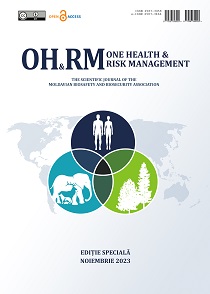Abstract
Introduction. Over the past few decades, antibiotics have found extensive application in treating bacterial infections in both humans and animals, and they have been used as growth promoters in agriculture. However, the increasing prevalence of antibiotic-resistant bacterial species across various environments poses a significant challenge to the targeted treatment of bacterial infections. The primary driver behind this surge in bacterial resistance in some regions is the overuse of antibiotics. Plant extracts and their active compounds have long been recognized for their antibacterial properties and are frequently employed in traditional medicine to combat pathogenic bacteria. In recent years, due to the emergence of drug resistance and the side effects associated with chemical antimicrobial drugs, the focus of scientific research has shifted towards exploring bioactive substances derived from plants. In essence, plants represent a vast reservoir of potentially beneficial chemicals, with only a fraction of them having been harnessed thus far.
The aim of this work was to determine the antimicrobial activity of a thyme and rosemary extract.
Material and methods. Thyme and rosemary extracts were evaluated for their antimicrobial activity against a range of microorganisms, including Gram-positive bacteria (Staphylococcus aureus, Bacillus cereus, Enterococcus faecalis, Geobacillus stearothermophilus), Gram-negative bacteria (Escherichia coli, Acinetobacter baumannii), and yeast (Candida albicans). To ensure the quality of antimicrobial testing for these biological compounds, the standardized well method, as recommended by the CLSI standard (Clinical and Laboratory Standards Institute), was employed. This method serves as a reliable means of assessing microbial activity.
Results. Upon evaluating the results obtained after performing the antimicrobial screening, it was found that both ethanolic extracts had an effect both on Gram-positive and Gram-negative bacteria as well as on fungi of the genus Candida. The largest inhibition area for rosemary extract was recorded in G. stearothermophilus (27.0 mm) and S. aureus (21.3 mm). The thyme extract was more active on the bacteria S. aureus (with a diameter of the inhibition zone 26.3 mm) and B. cereus (with a diameter of the inhibition zone 25.3 mm). The antifungal activity was more pronounced for the thyme extract (29.3 mm) compared to the rosemary extract (19.0 mm). Both extracts demonstrated higher activity on Gram-positive microorganisms compared to Gram-negative ones. Our data confirmed that rosemary and thyme extracts have antibacterial and antifungal activity.
Conclusions. Extracts of thyme and rosemary have the potential to inhibit and inactivate microorganisms at varying concentrations. Natural antimicrobial extracts from plants can be used in the food and pharmaceutical industry, to prevent the growth of pathogens and spoilage microorganisms and to enhance the shelf life and stability. Given their antimicrobial properties, these plant-based products offer a compelling alternative to traditional preservation methods and the use of chemical preservatives and additives. Extensive research has demonstrated their efficacy in curtailing the growth of both bacteria and yeasts.
|
 Views: 162|
|
Views: 162|
|
This work is licensed under a Creative Commons Attribution 4.0 International License.

